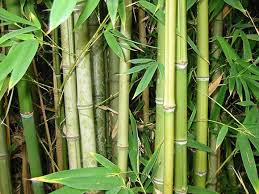

| Bamboe | Denim | Ribfluweel | Dralon | Dorlastan | Nylon |
 |
BAMBOE : Kunstmatige vezel : Plantaardig ; |
When it comes to bamboo - depending on how it is processed - there are two labelling options:
- If its fibres come from the bamboo's phloem or from dried and cut pieces of the plant, the label can say "bamboo fibre" - but this remains very rare.
- If its fibres are made from cellulose and transformed by the "viscose" or "lyocell" processes, the labels must say "viscose" or "lyocell" ( without specifying its origin ). This is because when an analysis of viscose fibre is carried out subsequently, it is not possible to determine the origin of the corresponding plant. In this case, if the label were to say "X % bamboo", it would be considered misleading for the consumer and therefore prohibited. We therefore recommend that you contact your supplier in order to be able to deliver all the necessary information on the material, in particular the fibre's origin and the process that has been used.
WHY USING BAMBOO FIBRES? Bamboo is a remarkable and highly versatile natural resource. For many centuries it has been utilised in Asia in a range of uses, including textiles. Bamboo is a wonderful, green resource that is hugely beneficial both to the way we want to live our lives today and to the environment: it is sustainable, eco-friendly and biodegradable
- If its fibres come from the bamboo's phloem or from dried and cut pieces of the plant, the label can say "bamboo fibre" - but this remains very rare.
- If its fibres are made from cellulose and transformed by the "viscose" or "lyocell" processes, the labels must say "viscose" or "lyocell" ( without specifying its origin ). This is because when an analysis of viscose fibre is carried out subsequently, it is not possible to determine the origin of the corresponding plant. In this case, if the label were to say "X % bamboo", it would be considered misleading for the consumer and therefore prohibited. We therefore recommend that you contact your supplier in order to be able to deliver all the necessary information on the material, in particular the fibre's origin and the process that has been used.
WHY USING BAMBOO FIBRES? Bamboo is a remarkable and highly versatile natural resource. For many centuries it has been utilised in Asia in a range of uses, including textiles. Bamboo is a wonderful, green resource that is hugely beneficial both to the way we want to live our lives today and to the environment: it is sustainable, eco-friendly and biodegradable
Terug
